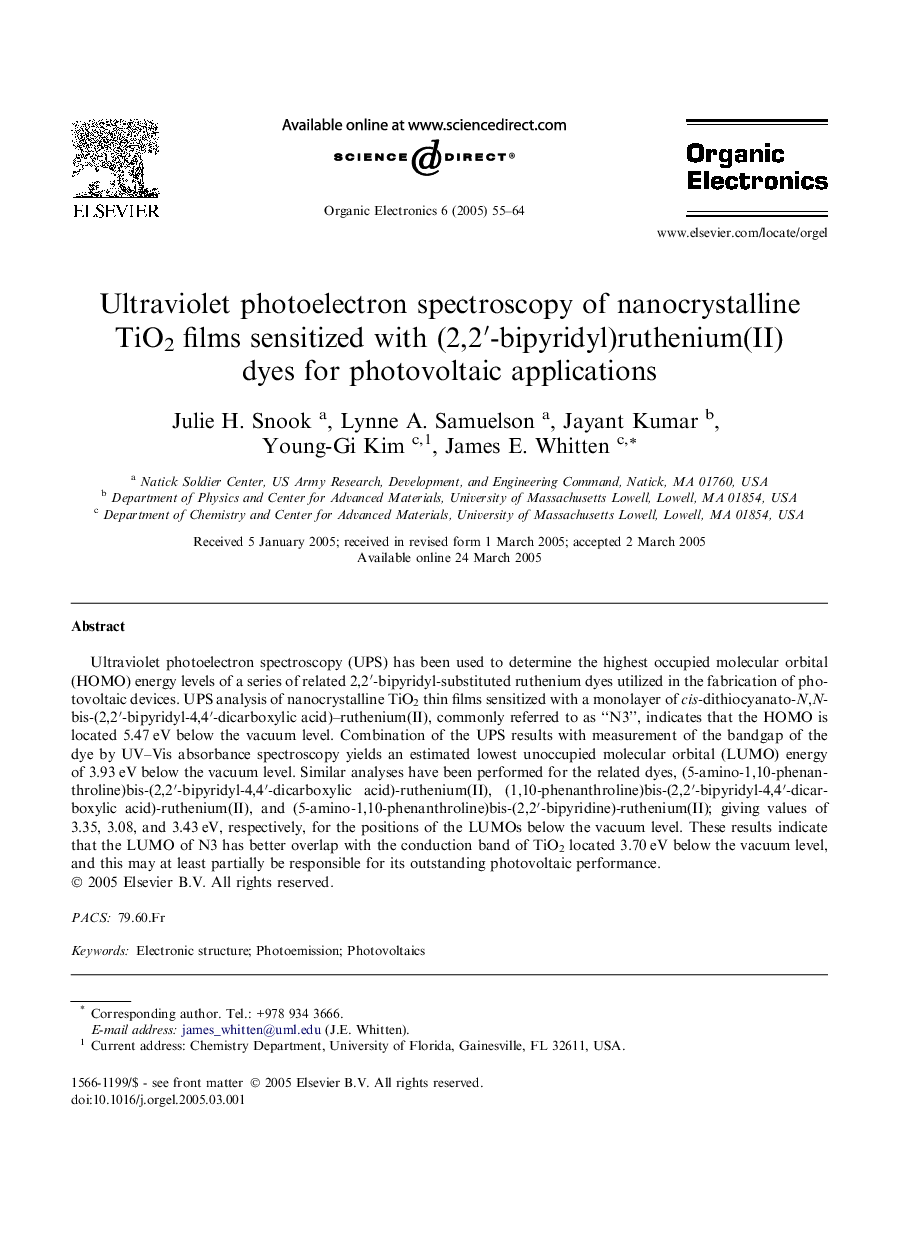| Article ID | Journal | Published Year | Pages | File Type |
|---|---|---|---|---|
| 10566195 | Organic Electronics | 2005 | 10 Pages |
Abstract
Ultraviolet photoelectron spectroscopy (UPS) has been used to determine the highest occupied molecular orbital (HOMO) energy levels of a series of related 2,2â²-bipyridyl-substituted ruthenium dyes utilized in the fabrication of photovoltaic devices. UPS analysis of nanocrystalline TiO2 thin films sensitized with a monolayer of cis-dithiocyanato-N,N-bis-(2,2â²-bipyridyl-4,4â²-dicarboxylic acid)-ruthenium(II), commonly referred to as “N3”, indicates that the HOMO is located 5.47Â eV below the vacuum level. Combination of the UPS results with measurement of the bandgap of the dye by UV-Vis absorbance spectroscopy yields an estimated lowest unoccupied molecular orbital (LUMO) energy of 3.93Â eV below the vacuum level. Similar analyses have been performed for the related dyes, (5-amino-1,10-phenanthroline)bis-(2,2â²-bipyridyl-4,4â²-dicarboxylic acid)-ruthenium(II), (1,10-phenanthroline)bis-(2,2â²-bipyridyl-4,4â²-dicarboxylic acid)-ruthenium(II), and (5-amino-1,10-phenanthroline)bis-(2,2â²-bipyridine)-ruthenium(II); giving values of 3.35, 3.08, and 3.43Â eV, respectively, for the positions of the LUMOs below the vacuum level. These results indicate that the LUMO of N3 has better overlap with the conduction band of TiO2 located 3.70Â eV below the vacuum level, and this may at least partially be responsible for its outstanding photovoltaic performance.
Related Topics
Physical Sciences and Engineering
Chemistry
Chemistry (General)
Authors
Julie H. Snook, Lynne A. Samuelson, Jayant Kumar, Young-Gi Kim, James E. Whitten,
